Tricor Industries is a precision manufacturer of compression springs. We can fulfill most any order, we specialize in production runs or emergency orders. Contact the Tricor team if you have questions, or if you need a price quote.
The staff at Tricor prepared the helpful information below, this will be helpful if you are a first time buyer and want to learn if compression springs are the right choice for your application:
Compression springs are helical springs designed to resist compressive forces. They store and release energy by exerting a force when compressed along their axis. These springs are fundamental components in a vast array of applications, from everyday household items to complex industrial machinery. Understanding their design, materials, and performance characteristics is crucial for optimal functionality and longevity.
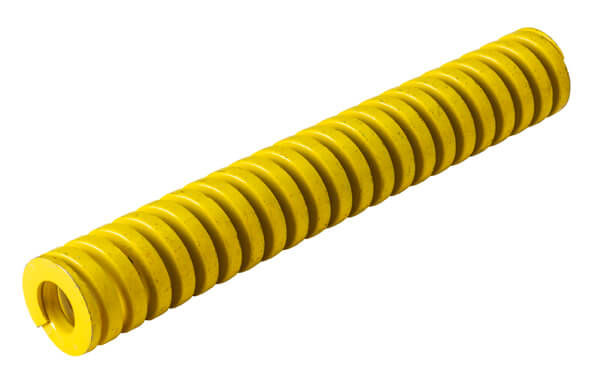
Key Features and Benefits:
- Linear Resistance: Compression springs provide a linear force-deflection relationship within their operating range. This means the force required to compress the spring increases proportionally to the amount of compression, ensuring predictable and consistent performance.
- Variety of End Types: Compression springs can be manufactured with various end types to suit specific application requirements:
- Plain Ends: The last coil is simply cut flat.
- Plain and Ground Ends: The last coil is cut flat and then ground to provide a flat bearing surface.
- Squared Ends: The last coil is flattened to provide a more stable base
- Squared and Ground Ends: The last coil is flattened and ground for maximum stability and perpendicularity.
- This variety of end types allows for stable installation and even force distribution
- Material Versatility: The material used in a compression spring significantly impacts its load capacity, fatigue life, and environmental resistance. Common materials include:
- Music Wire (ASTM A228): High tensile strength and excellent elasticity.
- Hard Drawn Wire (ASTM A227): Cost-effective for general-purpose applications.
- Stainless Steel (ASTM A313): Excellent corrosion resistance for demanding environments.
- Oil Tempered Wire (ASTM A229): Enhanced fatigue resistance and strength for dynamic applications
- Specialty alloys are available for applications involving extreme temperatures or corrosive environments.
- Customization Options: We specialize in custom compression springs, engineered to your precise specifications. We can tailor dimensions, end types, materials, and finishes to meet your unique application requirements.
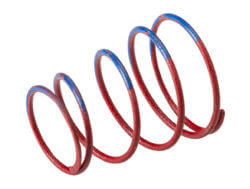
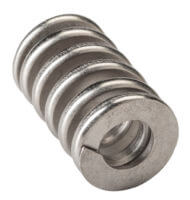
Technical Considerations for Engineers:
- Spring Rate (k): The spring rate, measured in force per unit length (e.g., N/mm or lbs/in), defines the spring’s stiffness. It is calculated using the formula: k=8ND3Gd4 where::
- G = Shear modulus of the material
- d = Wire diameter
- N = Number of active coils
- D = Mean coil diameter
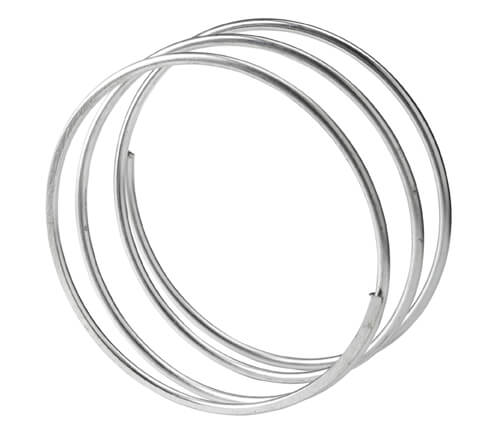
- Solid Height and Free Length: Understanding the solid height (the spring’s height when fully compressed) and free length (the spring’s unloaded height) is essential for proper spring selection and application design.
- Buckling: Long, slender compression springs are susceptible to buckling under load. The slenderness ratio (free length divided by mean coil diameter) is a critical factor in determining buckling stability.
- Natural Frequency: The spring’s natural frequency should be considered to avoid resonance, which can lead to excessive vibration and premature failure.
- Stress Analysis: Accurate stress analysis is crucial to prevent spring failure under load. Factors to consider include:
- Shear stress
- Bending stress (in end coils)
- Fatigue stress

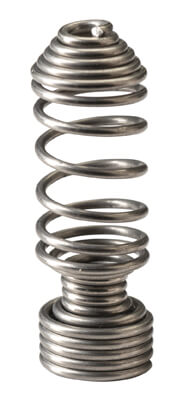
For First Time Buyers – Here is a step-by-step guide on how to specify and buy compression springs
- Application Requirements: Clearly define the application’s requirements, including:
-
- Load and deflection range
- Operating environment (temperature, corrosion)
- Space constraints
- End type requirements
- Cycle life requirements
-
- Material Selection: Choose a material that meets the application’s performance and environmental requirements.
- End Configuration: Select the appropriate end configuration for stable installation and even force distribution.
- Quality and Reliability: Partner with a reputable spring manufacturer that adheres to strict quality control standards.
- Customization Options: Inquire about customization options to meet specific application needs.